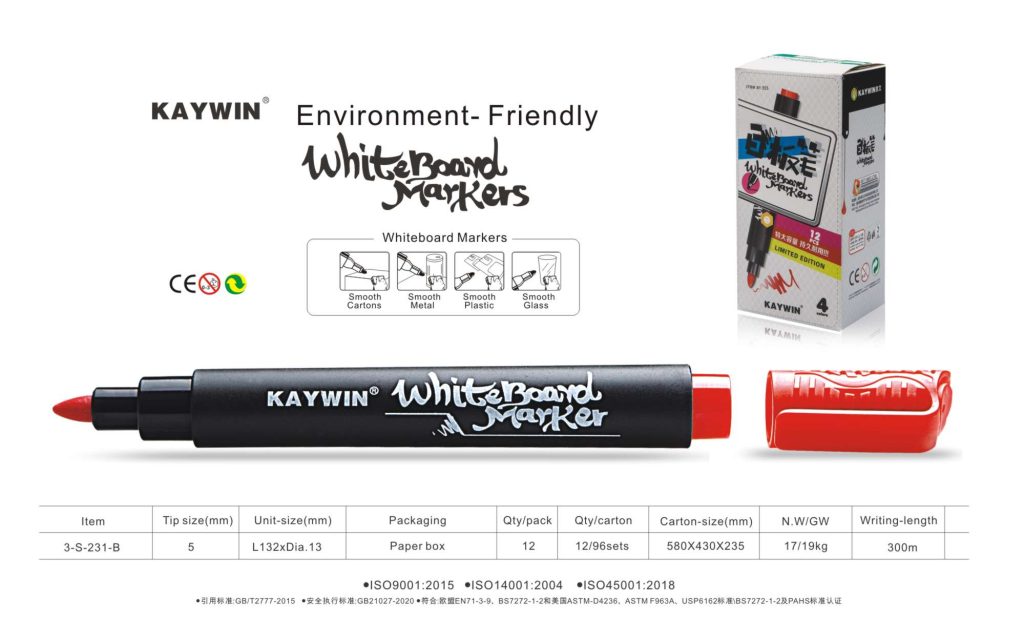Can You Use Whiteboard Markers on Glass?
We get this question a lot from many of our clients: can you use whiteboard markers on glass and other surfaces?
In this post, we will share some information on where you can effectively use whiteboard markers. But first, it’s important to know how whiteboard markers work.
How Do Whiteboard Markers Work?
Whiteboard markers, also known as dry-erase markers, contain a specialized ink formulated to adhere to smooth, non-porous surfaces.
The ink in whiteboard markers is typically a low-odor, alcohol-based solution that includes pigments or dyes that provide vibrant colors while being easily erasable. Alcohol is often used as a solvent in the ink to ensure quick drying and easy erasability.
Surfactants help the ink spread evenly on the surface. They prevent the ink from beading up or creating uneven lines. Whiteboard markers also have polymer binders that help the ink adhere to the surface while allowing easy removal. They form a film on the surface that can be wiped away without leaving residue.
Surfaces Compatible with Whiteboard Markers

Whiteboard markers are specifically designed for use on smooth, non-porous surfaces such as:
- Whiteboards
Traditional whiteboards are made of materials like melamine, porcelain, or glass that make an ideal canvas for whiteboard markers. That’s because they allow for smooth writing and effortless erasing.
- Glass
Glass surfaces are also becoming increasingly popular for writing with whiteboard markers. However, it’s important to consider the type of glass you plan to use. Glass whiteboards, glass tabletops, or any other smooth glass surface can be effectively used. Tinted or coated glass and glass that’s more porous than others may not work as it can affect the adhesion of the ink.
- Laminated surfaces
Some laminated surfaces, particularly those with a glossy finish, can work well with whiteboard markers. However, the quality of erasability may vary based on the specific laminate material.
- Acrylic
Smooth acrylic surfaces can also be suitable for whiteboard markers. Again, make sure the acrylic is non-porous for optimal performance.
Considerations and Limitations
Whiteboard markers don’t work well on porous surfaces such as paper or cardboard. The ink is designed to sit on the surface rather than being absorbed.
To maintain optimal performance, regular cleaning is necessary because dust and residue can affect the marker’s ability to write smoothly and be erased easily.
Whiteboard markers are intended for temporary markings. If left on the surface for an extended period, they may become more challenging to erase.
Whiteboard Marker on Glass is Possible
Using whiteboard markers on glass is not only possible but can also be a practical choice. By following the considerations and limitations mentioned above and choosing the right markers, you can harness the benefits of this versatile writing tool on glass surfaces.
Kaywin Pen offers premium whiteboard markers you can use not just on whiteboards but on glass, acrylic, and other surfaces as well. It’s a modern and effective solution for communication whether in a classroom, office, or home setting.
Reach out to us to know more!

